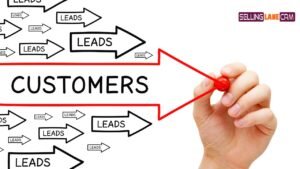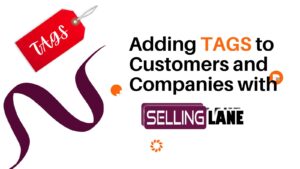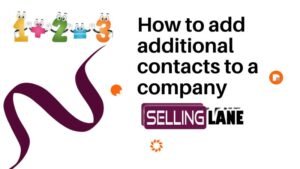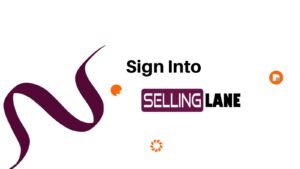The Plumber’s Paradox: When the Customer’s Wrong but You’re Humming the ‘Right’ Tune
Alright, pipe wizards and drain whisperers, gather ’round the virtual toolbox for a tale as old as time, or at least as old as the first leaky faucet. Here’s the scoop: The Customer Is Not Always Right, But They Are Always the Customer. Welcome to the murky waters of customer disputes with a wrench in one hand and humor in the other. This is part of the 10 Essential Plumbing Tips Every Apprentice Must Know series
The Leaky Logic
Imagine this: You’ve just explained why turning the “magic water stick” (the shut-off valve) is necessary, but Mr. Customer insists, “Nah, it’ll fix itself with a good ol’ smack.” Here’s where you could argue, but remember, you’re not just a plumber; you’re a diplomat of the drainage world.
Lesson 1: Smile and Nod
“Sure, sir, smacking pipes did work in the 1800s, but let’s try this shiny new thing called ‘technology’.”
The Case of the Clogged Truth
You’ve cleared the same sink for Mrs. Miggins thrice this month. She swears by her ‘eco-friendly’ disposal method of pouring bacon grease down the drain is the best way, and blames you for the fix not staying fixed.
Here’s what’s happening:
- The Eco-Friendly Myth: Mrs. Miggins believes she’s doing the environment a favor by disposing of her bacon grease down the sink, perhaps thinking it’s better than plastic or somehow biodegradable in the water system. She might have heard somewhere that hot water will keep the grease liquid enough to go down without issues.
- The Grease Trap Reality: In reality, bacon grease might go down the drain smoothly when hot, but as soon as it cools, it solidifies, sticking to the insides of the pipes like glue. Over time, this builds up, creating a fatberg – a plumber’s nemesis, which not only clogs her sink but can contribute to larger blockages in the sewer system.
- Educational Opportunity: Each visit gives you a chance to educate Mrs. Miggins. You explain that while her intentions are good, the method is flawed. Grease should be cooled and disposed of in the trash or, better yet, collected for recycling where facilities exist. You might humorously illustrate how grease in pipes is like cholesterol in arteries – neither ends well.
- Solution Selling: Beyond just clearing the clog, you could suggest alternatives:
- Grease Collection: Show her how to pour cooled grease into a disposable container.
- Composting: If she’s truly eco-conscious, discuss how some greases can be composted in small amounts or used in making bird suet if appropriate.
- Preventive Maintenance: Recommend a sink strainer to catch food particles and perhaps a monthly enzyme-based cleaner that can help break down minor grease buildup.
- Building Trust: Every interaction is a chance to build trust. You’re not just fixing a sink; you’re providing a service that includes education, prevention, and environmental care. This turns a repetitive problem into a relationship where Mrs. Miggins sees you not just as a plumber, but as an advisor on all things plumbing-related.
- The Humorous Twist: You might quip, “Mrs. Miggins, if sinks were meant to digest bacon, they’d come with bacon bits, not drain pipes.” This light-hearted approach can make the lesson stick better than the grease.
By addressing the root cause with patience, humor, and education, you not only solve the immediate issue but also prevent future calls for the same problem, turning a frustrating cycle into a showcase of your professionalism and customer care.
Lesson 2: Educate with a Grin
Situation: The Case of the Over-enthusiastic DIYer
The Scene: You’re called to the home of Mr. Thompson, an enthusiastic but inexperienced DIYer who decided to upgrade his bathroom. He attempted to install a new showerhead but ended up with a fountain in his bathroom, as he didn’t quite understand the concept of water pressure or how to properly seal connections.
The Problem: Upon arrival, you find water spraying everywhere, and Mr. Thompson is soaked, frustrated, and surrounded by a collection of tools, none of which he seems to have used correctly. He’s embarrassed and ready to defend his attempt, insisting he followed a YouTube tutorial.
Your Approach – Educate with a Grin:
- Initial Reaction: Instead of sighing or showing frustration, you enter with a grin, saying, “Wow, Mr. Thompson, looks like you’ve started your own indoor water park! Let’s see if we can turn this into a more controlled splash zone.”
- Assessment with Humor: As you assess the damage, you might say, “You know, they say ‘go big or go home,’ but in plumbing, we aim for ‘go small and keep it all in the pipes.'”
- Educational Banter: While fixing the issue, you explain what went wrong in a light-hearted way, “See, this seal here is like the secret handshake of plumbing. If you don’t get it just right, it’s going to tell all the water to come out and play where we don’t want it to.”
- Teaching Moment: You show him how to properly seal the connections. “Here’s a trick, we twist until it feels like a firm handshake, not too loose, not crushing bones. Just right.”
- Empowerment: After fixing the immediate issue, you leave him with some basic tips for next time, “Next time you feel like channeling your inner plumber, remember, water pressure is like a cat; it’ll find any way out if you give it a chance. But here’s how you can keep it in check…”
- The Closing Grin: As you pack up, you might add, “You’ve got the spirit, Mr. Thompson. With a bit more practice, you’ll be installing showerheads with your eyes closed. But maybe keep them open, just for safety.”
By educating Mr. Thompson with a grin, you:
- Diffuse the tension: Laughter or a light-hearted approach can make the situation less embarrassing for him.
- Provide value: He learns something useful, potentially saving him from future mishaps.
- Build rapport: Instead of feeling scolded, he feels supported, which can lead to him calling you for future jobs or recommending you to others.
- Encourage proper DIY: By showing him the right way without belittling his effort, you encourage safer and more effective DIY attempts in the future.
This approach not only fixes the immediate plumbing issue but also builds customer loyalty through education delivered with empathy and humor.
Lesson 3: Solve and Soothe
“Well, we’ve exorcised the ghost with a new flapper. But if it’s spirits you’re worried about, maybe keep some holy water next to the plunger.”
Situation: The Midnight Leak Crisis
The Scene: It’s 11 PM on a cold winter night when you receive an urgent call from Mrs. Alvarez, a single mother with two young children. Her basement is flooding due to a burst pipe, and she’s in a panic, worried about water damage, the safety of her kids, and the potential cost.
The Problem: Upon arrival, you find a pipe has indeed burst due to freezing temperatures, and water is gushing into the basement, which is starting to resemble a small swimming pool. Mrs. Alvarez is on the verge of tears, overwhelmed by the situation.
Your Approach – Solve and Soothe:
- Immediate Action with Reassurance: You start by quickly locating and shutting off the main water valve, saying with a calm smile, “Alright, the water’s taking a break now. Let’s show this leak who’s boss.”
- Assess and Explain: While assessing the damage, you explain in simple terms what happened, “Looks like Jack Frost got a bit too playful with your pipes. But don’t worry, we can fix this up no problem.”
- Solution-Oriented: You outline the steps you’ll take: “First, we’ll get this water out, then we’ll replace the burst section of the pipe. I’ll have you dry and cozy in no time.”
- Empathy in Action: Knowing she’s worried about the kids, you might say, “How about we set up a little dry island for the kids with some towels and blankets? They can even have a ‘camping adventure’ while we sort this out.” This helps distract and comfort the children, reducing their mother’s stress.
- Work with Encouragement: As you work, you keep the atmosphere light, “You know, in plumber’s school, they said we’d get to play with water, but they never mentioned it would be this much fun.” This humor helps to soothe her anxiety.
- Aftercare Instructions: Once the pipe is fixed and the water pumped out, you give her advice on preventing future freezes, perhaps with a chuckle, “Let’s not give the pipes any more cold surprises. Here’s how we can keep them warm and toasty.”
- Cost Transparency: You address her financial concerns by discussing the costs upfront, offering any possible solutions or payment plans if necessary. “Let’s talk numbers. Here’s what we’re looking at, but I’ve got a few tricks to keep costs down where we can.”
- Follow-Up Offer: Before leaving, you reassure her, “I’ll give you a call tomorrow to make sure everything’s still dry and happy. And if Jack Frost decides to visit again, you know who to call.”
By solving the immediate problem while soothing Mrs. Alvarez’s worries:
- You address the emergency: The leak is fixed, preventing further damage.
- You provide emotional support: Through empathy and humor, you help manage her stress during a crisis.
- You build trust: By being transparent about costs and offering aftercare, you show that you’re not just there for the job, but for the client’s peace of mind.
- You ensure customer satisfaction: This approach likely turns a distressing situation into a positive customer service experience, encouraging loyalty and word-of-mouth referrals.
This method not only fixes the plumbing issue but also reinforces your role as a reliable, caring professional in the eyes of your customer.
Lesson 4: Value with Valor
- “I see your point, but unlike a space shuttle, I make house calls, and I don’t require a launch pad, just a parking spot.”
Situation: The High-Stakes Bathroom Renovation
The Scene: You’ve been hired by Mr. and Mrs. Chen, a couple who’ve decided to renovate their master bathroom into a luxury spa-like retreat. They’ve invested a significant amount of money into high-end fixtures, tiles, and a custom glass shower. However, halfway through the project, they’re getting cold feet about the costs, particularly after an unexpected expense cropped up elsewhere in their home.
The Problem: The Chens are now questioning the value of continuing with the high-end materials versus scaling back. They’re worried about overspending, and their anxiety peaks when they see the invoice for your labor and the custom parts ordered.
Your Approach – Value with Valor:
- Acknowledge Their Concerns: You start by validating their feelings, “I understand this renovation is a big investment, and unexpected costs can really shake things up.”
- Reaffirm the Vision: You remind them of their initial vision, “Remember, we’re not just installing a bathroom; we’re crafting your personal retreat, a daily escape. Quality here means longevity and satisfaction every time you step in.”
- Detailed Breakdown: You go through the invoice with them, explaining each cost with confidence:
- “This custom shower glass isn’t just any glass; it’s safety tempered, designed to last decades without losing clarity or integrity.”
- “The eco-friendly, water-saving toilet might be pricier now, but it’ll save you on water bills and is better for the planet.”
- Highlight Expertise: You emphasize your expertise and the care taken in installation, “My team and I ensure every piece is installed to perfection. This isn’t just about fitting parts; it’s about creating a seamless experience where nothing goes wrong for years to come.”
- Value Over Price: You discuss the long-term value, “Think of this as buying peace of mind. Cheaper alternatives might save money now but could lead to leaks, cracks, or inefficiencies that cost more in the long run.”
- Offer Solutions, Not Problems: If they’re still concerned, you propose adjustments that don’t compromise quality but might adjust scope:
- “If we’re looking to adjust, let’s consider where we can streamline without losing the luxury feel. Perhaps we use the high-end tiles as accents rather than for the entire floor.”
- Valor in Assurance: You stand by your work, “I stand behind every fitting, every tile. If in five years, you’re not still in love with this bathroom, I’ll be surprised, but I’ll be here to make it right.”
- Future Benefits: You might add a touch of forward-thinking, “And when it’s time to sell, homes with custom, high-quality renovations like this often see a better return on investment.”
By demonstrating value with valor:
- You reassure the client: They feel their investment is justified by the quality and expertise they’re receiving.
- You maintain the integrity of your work: By not immediately jumping to cost-cutting, you uphold the standard of your service.
- You offer strategic compromises: If necessary, you find ways to adjust without undermining the project’s value.
- You build a lasting relationship: Through transparency and confidence in your work, you not only secure the current job but potentially future referrals and projects.
This approach not only salvages potentially wavering customer confidence but also positions you as a plumber who brings both skill and integrity to the table, ensuring clients see the true value in their investment.
Lesson 5: Fix with Finesse
“Looks like you’ve started an impressive water feature! Shall we turn this into a professional job, or are we aiming for a Venice theme?”
Situation: The Luxury Loft’s Leaky Faucet Fiasco
The Scene: You’re called to a high-end loft apartment owned by Ms. Harper, a high-profile interior designer known for her meticulous taste. She’s hosting an important event in a week, showcasing her latest design project, but there’s an issue: a designer faucet in her showcase bathroom has started leaking, threatening to undermine the perfection she strives for.
The Problem: The faucet is a rare, imported model, and the leak is not just a drip but has the potential to escalate, potentially damaging the custom marble countertop or the art piece displayed nearby. Ms. Harper is visibly upset, not just about the leak, but about the timing and the potential embarrassment in front of her elite guests.
Your Approach – Fix with Finesse:
- Acknowledge the Urgency: You start by recognizing the importance of the situation, “Ms. Harper, I understand how crucial this event is for you, and this faucet issue is unacceptable. Let’s fix this with the elegance it deserves.”
- Quick Assessment: You examine the faucet with care, ensuring not to disturb the aesthetic setup. “This is indeed a fine piece. I’ll treat it with the respect it warrants.”
- Solution with Style: Knowing the original part might take too long to arrive, you propose a temporary yet stylish solution:
- “While we wait for the exact replacement part, I can install a temporary valve that matches your decor. It’ll be seamless, and no one will notice it’s not the original.”
- Precision in Execution: You work with precision, using tools that won’t scratch or damage the surrounding area. You might even use a soft cloth to lay your tools on, showing your attention to detail.
- Educate with Elegance: While working, you explain your process in a way that engages her, “This valve here is like the jewelry of plumbing; it needs to fit perfectly to shine. I’ll ensure it’s as unobtrusive as a shadow.”
- Test with Tact: After fixing the leak, you test the faucet multiple times, ensuring no droplets escape, perhaps saying, “Let’s make sure this faucet performs as beautifully as it looks.”
- Offer Assurance: Before you leave, you assure her, “I’ll have the original part expedited, and I’ll personally ensure it’s installed before your event. For now, this fix will hold court with the best of them.”
- Follow-Up with Flair: You leave her with a small, elegant toolkit (branded with your company logo), “Just in case of any minor adjustments, though I doubt you’ll need it. And I’ll check in a day before the event for a final touch-up.”
By fixing the issue with finesse:
- You match the client’s standards: Understanding and respecting the luxury and aesthetic of the environment.
- You provide a bespoke solution: Tailoring your service to meet the unique needs of the situation, showing adaptability and creativity.
- You maintain professionalism: Your approach reassures the client that they are in capable, caring hands, thus preserving her peace of mind during a stressful time.
- You enhance your reputation: By handling the situation with such care, you not only solve the immediate problem but also likely secure future high-end clientele through Ms. Harper’s recommendations.
This approach demonstrates that for a plumber, fixing a problem isn’t just about stopping leaks; it’s about doing so in a way that respects and complements the client’s lifestyle and expectations.
Conclusion: Navigating the Waters of Customer Service in Plumbing
In the nuanced world of plumbing, where pipes and personalities intertwine, the principle that “The Customer Is Not Always Right, But They Are Always the Customer” serves as a guiding light. This mantra reminds us that while customers may not grasp the complexities of plumbing, their perceptions, comfort, and satisfaction are paramount. Through scenarios like the luxury loft’s leaky faucet, we see that effective plumbing solutions require not just technical skill but also empathy, education, and sometimes, a touch of creativity. By approaching each job with professionalism, patience, and a bit of humor, plumbers can turn potential conflicts into opportunities for demonstrating value, building trust, and fostering long-term relationships. In plumbing, as in all service industries, the true measure of success isn’t just in fixing leaks but in ensuring the customer feels heard, respected, and valued, regardless of their initial understanding of the problem.
“To give real service you must add something which cannot be bought or measured with money, and that is sincerity and integrity.”
– Douglas Adams, Author of “The Hitchhiker’s Guide to the Galaxy“. (Source: Although not directly from his books, this reflects his philosophy on life and service)













